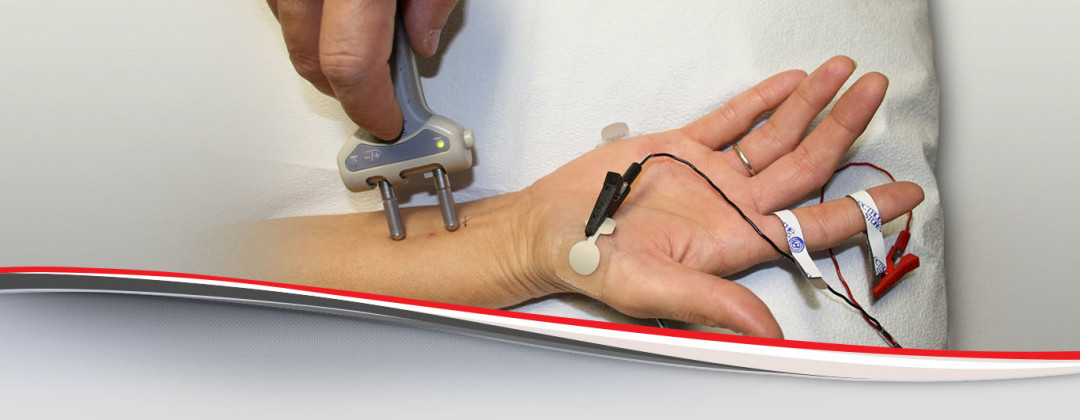An electromyogram (EMG) measures the electrical activity of muscles at rest and during contraction. Nerve conduction studies measure how well and how fast the nerves can send electrical signals.
Nerves control the muscles in the body with electrical signals called impulses. These impulses make the muscles react in specific ways. Nerve and muscle problems cause the muscles to react in abnormal ways.
If you have leg pain or numbness, you may have these tests to find out how much your nerves are being affected. These tests check how well your spinal nerves and the nerves in your arms and legs are working.
Why It Is Done:
An EMG is done to:
- Find diseases that damage muscle tissue, nerves, or the junctions between nerve and muscle. These problems may include a herniated disc, amyotrophic lateral sclerosis (ALS), or myasthenia gravis (MG).
- Find the cause of weakness, paralysis, or muscle twitching. Problems in a muscle, the nerves supplying a muscle, the spinal cord, or the area of the brain that controls a muscle can cause these symptoms. The EMG does not show brain or spinal cord diseases.
How It Is Done:
An EMG is done in a hospital, clinic, or doctor's office. It may be done in a room that stops any outside electrical interference. The test may be done by an EMG technologist or a doctor.
You will be asked to lie on a table or bed or sit in a reclining chair so your muscles are relaxed.
The skin over the areas to be tested is cleaned. A needle electrode that is attached by wires to a recording machine is inserted into a muscle.
When the electrodes are in place, the electrical activity in that muscle is recorded while the muscle is at rest. Then the technologist or doctor asks you to tighten (contract) the muscle slowly and steadily. This electrical activity is recorded.
The electrode may be moved a number of times to record the activity in different areas of the muscle or in different muscles.
The electrical activity in the muscle is shown as wavy and spiky lines on a video monitor and may also be heard on a loudspeaker as machine gun-like popping sounds when you contract the muscle. The activity may also be recorded on video.
An EMG may take 30 to 60 minutes. When the test is done, the electrodes are removed and those areas of the skin where a needle was inserted are cleaned.
